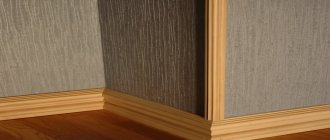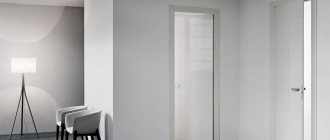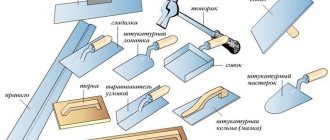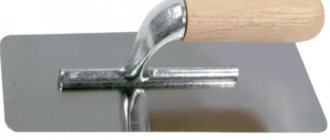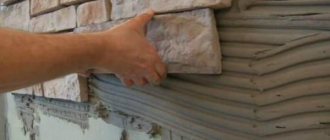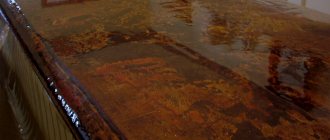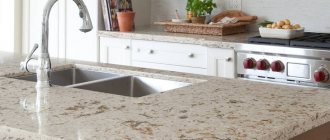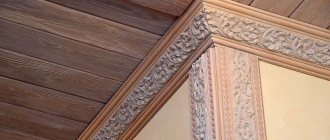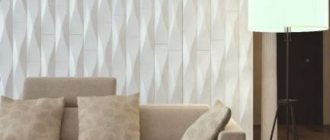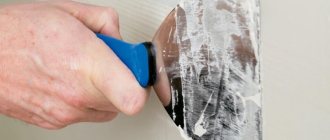Corners play a bigger role in the interior than it might seem at first glance. It is enough to look at their uneven or “erased” surfaces to immediately become clear: no one would call such a finish neat. Decorative corners on the corners of walls, slopes of door and window openings began to be used everywhere during repairs only in recent years. Until then, the materials used to cover the joints simply changed more often than the rest of the finish.
You can appreciate the transformative effect of a decorative element even in an empty room without furniture. Based on the type of location, they are classified into two types:
| Exterior | They are used to decorate the exterior facades of houses. |
| Interior | Used in rooms of city apartments and private houses. |
Elements are also classified into those that are placed on the outer sides of the corners and those that are inserted into the internal ones. The latter can have semicircular shapes that “soften” the finish. You can make a corner with your own hands, or purchase it at a specialized store. Products are made mainly from plastic, MDF, but there are also more durable metal and stone options. Polyurethane effectively imitates various natural materials: wood, marble, sandstone, brick. Plastic corners are used not only as decoration, but also as a durable finishing element that will “outlast” wallpaper or other less durable wall surface coating. There is also a “mystical” component to the question. According to Feng Shui, the places where the “joints” of the walls are considered energy breaks, which create an imbalance and negatively affect the perception of the situation, so their edges are decorated with corners, “smoothing out” the sharpness.
- What are decorative corners for?
- When to apply
- Plastic corner size
- Types of decorative corners on walls Arched
- For ceramic tiles
- For external and internal corners
- Textured corners
- Wooden
- Corners for ceilings and baseboards
- Natural stone corners
- Artificial stone corners
- Finishing door and window slopes
When corners are needed for wall corners
There is a lot of need for the use of such material in our time. They are often required to align corners in an apartment. Builders often discover such a problem and have to do additional work to correct the situation.
To create the correct shape, you need to prepare the working surface. The previous covering in the form of wallpaper, plaster, and whitewash is removed. Then the craftsmen treat it with an antiseptic and apply a new primer.
Using a special corner, available on the shelves of hardware stores, the desired shape is formed at the corners of the walls.
- As work progresses, the angle of deviation and evenness of the resulting plane are checked.
- At the end of the work, special metal corners are glued to the corner and additionally covered with a finishing layer.
- After performing small construction actions, the angle is completely leveled and the desired visual effect is created.
- In the most difficult situations, different finishing materials can be used - PVC panels or plasterboard parts.
To handle angles other than 90 degrees, folding angles are used. In addition to leveling the surface, corners are needed to create surface decoration.
Used to decorate corners located inside or outside. Refining the corners in the apartment makes it possible to use different decorative elements.
Arch finishing
Arch design often becomes a problem. In general, there are not many external corners in the apartment, but there are always some on the arch. And in the aisle they very often get touched. Either furniture, or other cargo, or simply a resident who did not fit into the opening. And there are no questions with the straight part, but the rounded part can be a problem.
And not only in the doorway can there be an arched vault
In general, you can use universal corners for an arch. They are flexible, which is very convenient. There are flexible, non-universal ones - plastic, made from a special polymer with increased elasticity.
But in general, corners with different shelf widths are used to decorate arches. They are even called arched. They have one shelf 10 mm (external) and the second - internal - 30 mm or more. They bend easily. You can’t twist it into a donut, but it’s not difficult to get an arc of any curvature. You just need to use a secure hold while the glue dries.
This is an arched plastic corner
If you want to bend a regular corner, you can do this by heating the plastic. For this work you need a hair dryer. The usual one - for hair - will not work, since its temperature is too low. We also need a template according to which we will bend the plastic corner. Take a piece of fiberboard, tighten screws or drive nails, forming the profile that you require.
This way you can decorate the corners of the arch with protective corners
They start bending from the middle. Warm up the area, constantly pressing on the middle, and using a hairdryer, moving from the center to the edges. So you need to bring the corner to the desired curvature and leave it in this position to cool. To prevent it from straightening out, holes are made in parallel with a row of screws for the second row. The distance between the rows is equal to the width of the corner shelf. After the plastic has bent, insert and lightly tighten the screws. After the plastic has cooled, remove them.
Types of decorative corners
Corners appear to be multifunctional finishing details. They are glued in bedrooms, living rooms, offices, baths, and kitchens.
Decoration is done using different types of elements:
- Types made from wood;
- For corners such as internal and external;
- Products for slopes of doors and windows;
- Arched type, for plasterboard partitions;
- Types with texture;
- Corners made of synthetic and natural stone;
- Special guides for siding;
- For external and internal corners;
- Models for floor and ceiling joints;
- On faience tiles.
Any of the options is suitable for a certain wall finish and fits well with individual styles. Corners decorate not only walls, but also furniture, fireplaces, stoves, boxes for covering pipes and communications.
Universal flashings for windows and doors
The description of the strips indicates the size of one side. The second is narrow and is designed to smooth corners and round them. At the same time, this design allows the strip to fit tightly at the junction of the frame and the wall and close the gaps. The corner material is selected to match the frame.
They are produced:
- polyurethane;
- polyvinyl chloride;
- wooden;
- metal;
- MDF.
Related article: How to repurpose old curtains into new home interior decor
Protective profiles are available in white, colored and decorative. It is recommended to install metal and MDF ones outside. I use them to decorate windows, doors, loggias and balconies. Flashings protect the mounting foam from sunlight and moisture more reliably than other materials. They look great. They are not a mandatory element when facing slopes. You can use sealant and putty followed by painting. But with them, windows and balconies take on a complete look.
Flashings protect the mounting foam from sunlight and moisture more reliably than other materials.
Criteria for choosing decorative corners
To combine the design of a room with its objects, you should pay attention to certain aspects when selecting a profile.
Worth taking note:
- Plane materials. When the walls are lined with clapboard, the edges covered with whitish plastic will look awkward.
- Finish color. A purple corner will spoil the appearance when the room is decorated in light colors.
- General design style. A metal profile will negatively affect the interior of a classic style, but it will well emphasize the high-tech message.
- Functionality of the room. It is optimal to choose silicone corners for children's rooms, and a PVC element is perfect for the bathroom and kitchen. The wooden look with quarters is perfect for furnishing offices.
Preparatory work
Their implementation is one of the important stages, the correct implementation of which significantly increases the likelihood of obtaining a high-quality finishing result and saves time. Work must be carried out in good lighting using previously prepared materials and tools. For this purpose, in addition to the very corners and the selected adhesive composition, you need the following:
- metal square;
- masking tape;
- tape measure and pencil;
- miter box;
- a stationery knife, a hacksaw with fine teeth, metal scissors or a grinder with a metal disc, with which you will need to cut the plastic corner.
Note! When cutting plastic corners, you should avoid using ordinary knives, since with them there is an extremely low probability of doing everything efficiently and evenly without spoiling the material.
Tips for choosing
Finishes may vary. It is better to choose a color to match the tinting of the walls. She will fit into it and will not attract attention to herself.
This certainly helps if a plane catches your eye, for example, the corner between the hallway and the bedroom.
- When it comes to choosing wooden corners, designers recommend choosing a door or ceiling finish that matches the color and texture of the doors.
- This way it will look natural. If you want to save money, you need to buy plastic corners made to look like wood.
- When creating modest interiors with a minimalist style, metal corners fit well.
- They look great in high-tech or loft style. The width of the shelf should be selected so that it completely covers the end of the corner.
This is worth listening to if the walls are finished with plasterboard, when noise insulation with insulation is additionally performed. The edges of such structures often have gaps; the decorative corner perfectly covers all the gaps.
Often the angle between the slope and the wall is more than 90 degrees. In order for the selected profile to adhere tightly to it, it will need to be bent a little. This can be done with a corner made of metal and plastic.
To do this, the craftsmen suggest laying the object on a leveled plane with one edge, and then applying a little pressure on top with your hands and pressing down with your fingers along the length of the corner. During cold weather, this process should be carried out when the item has been left in the room for 24 hours and warmed up to the ambient temperature.
Tile products
Colored corners for tiles are made of aluminum and its alloys.
They arrange a coating on it and polish it to a mirror shine. Varnish is applied on top or laminated. Thanks to this technology, the protrusions receive reliable protection. The decorative characteristics of the room are improved. On one side of the profile there is a perforated strip equipped with slits. Lay on the surface of the wall or on steps. The opposite side is decorative. On the opposite side it has a small internal protrusion. The side end of the tile is inserted here when the corners are laid. It is important that it fits tightly.
The tiled profile is not only intended for decorative purposes. It makes surfaces smooth during finishing work. Three-sided elements are provided for protruding corners. They allow you to close connections in three planes. They are placed at the junction of finishing profiles located at right angles.
How to attach decorative corners
To install a corner profile, various adhesives are often used, but iron and wooden models are rarely secured with nails or self-tapping screws.
- Adhesives for fastening plastic types: liquid nails, acrylic or silicone sealant. When using sealants, the profile should be pressed after gluing with masking tape for 12 hours. The best result comes from liquid nails; some brands of it do not need to be pressed during the gluing period. This glue is applied to one of the planes, the second is pressed, then it is removed and the glue is given time to dry, after which the part to be glued is pressed firmly. To install objects made of polyurethane, you can also use liquid nails.
- Gluing wooden options. The flatness of wood corners should be protected by painting or varnishing. The clear varnish preserves the texture of the wood, and a thick ball of paint hides it. If you want to give the wood some shade while preserving the texture, you need to apply a stain or a wood tonic impregnation. Wooden products are secured using liquid nails, PVA, and carpenter's glue. You can also attach it to finishing nails.
Why do you need to trim?
There are 3 main reasons to install decorative corners on the corners of the walls:
1. Protection. As already mentioned, external corners need additional protection because... the material on them wears out very quickly from friction, accidental impacts, and other mechanical damage. An exception is wall decoration with washable paint, tiles or porcelain stoneware, or wood.
The photo shows an example of a damaged corner in the hallway
2. Alignment. It is quite difficult to connect two sides at 90 degrees with plaster - without experience it is almost impossible to do it yourself, and the work of a specialist will cost a lot of money.
To simplify the task, use special leveling corners for putty or external decorative elements after finishing.
Fastening corners made of polystyrene foam and stone
Expanded polystyrene seems to be a non-flammable raw material. Does not absorb dirt and water. Such profiles can be painted. These aesthetic elements not only protect corners, but also look great.
They are attached with special glue and the usual acrylic sealant. Stone - it’s good for lining external corners.
- Before laying the stone, you need to prepare the surface. Cleaning of dust, dirt, aged material is done and then primer is applied.
- A very dry surface should be wetted to increase the adhesion of the glue.
- First, the glue is diluted according to the instructions supplied with it. It retains its qualities for 2 hours.
- Prepared in a plastic container, mixed with a drill and a monogram. For 1 m2 of area you will need 6 kg of mixture.
The stone is applied to the plane with force. Next, the level checks the evenness. The stone is laid in 3 rows and left for a short time. The glue will dry in 2 hours.
If you do not wait for this period, the masonry of further rows will not be strong and may collapse under its heavy mass.
Stylish console
The optimal option with a curved table will allow you to comfortably and attractively arrange an awkward corner.
Such an attractive piece of furniture will serve you as a stand for keys or mail.
Wonderful design of free space
In a small hallway it is strictly forbidden to place large furniture, or furniture that is too rough and massive.
The ideal installation would be one that has a thin or transparent frame.
Accessory shelves with a sleek design
Photo of decorative corners for wall corners
Impeccable scenery
An architectural feature that seems inconvenient at first glance can be used for decoration.
Just look how many cute and tempting details can be installed in this corner, at the sight of which your guests will look at the fascinating composition with emotion.
Attract attention with objects of varying heights
Do you like to read and at the same time escape from all your worries? Relax with your favorite activity in a private space equipped with a plush chair, coffee table and adjustable light.
Nook
Organic motives
For small and narrow hallways, massive furniture is not recommended; it is better to opt for simple but original ideas, decorative and interior items that will be practical and attractive.
Sculptural Accents
Whatever the layout of your hallway, even the most inconvenient corners can be presented as individual features.
Often it is non-standard solutions that can radically change the image, give you the opportunity to dream up and make bold decisions.
Creative atmosphere
Some hallways are so spacious that you will have to select many more items to create a proportional interior design.
For this project, an interesting style was chosen that demonstrates the preferences of the homeowners.
A piano can also decorate a room
Play with shapes and sizes
We have already mentioned a similar option above; although there is less space here, the design is arranged in a harmonious manner.
Stunning decor
